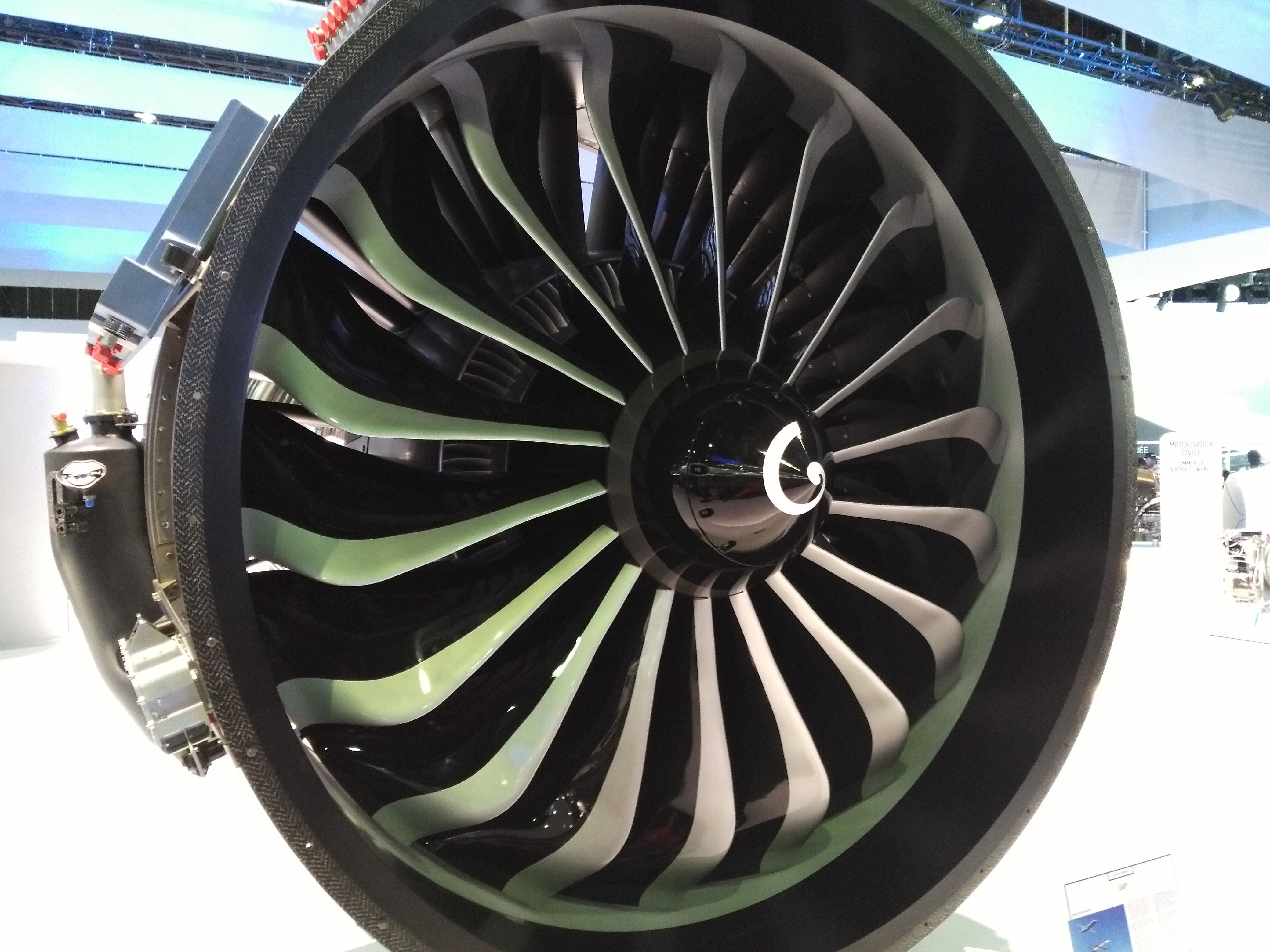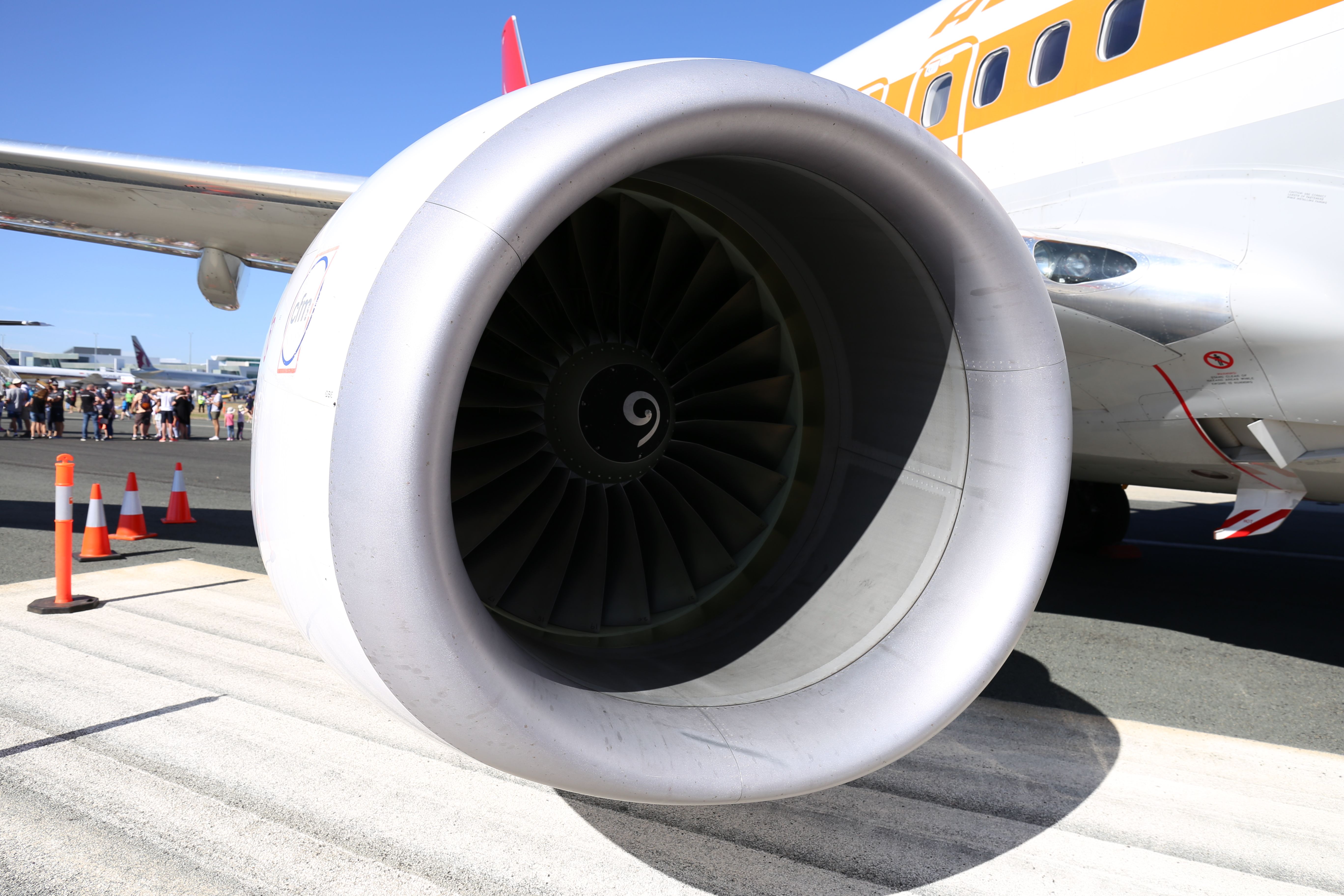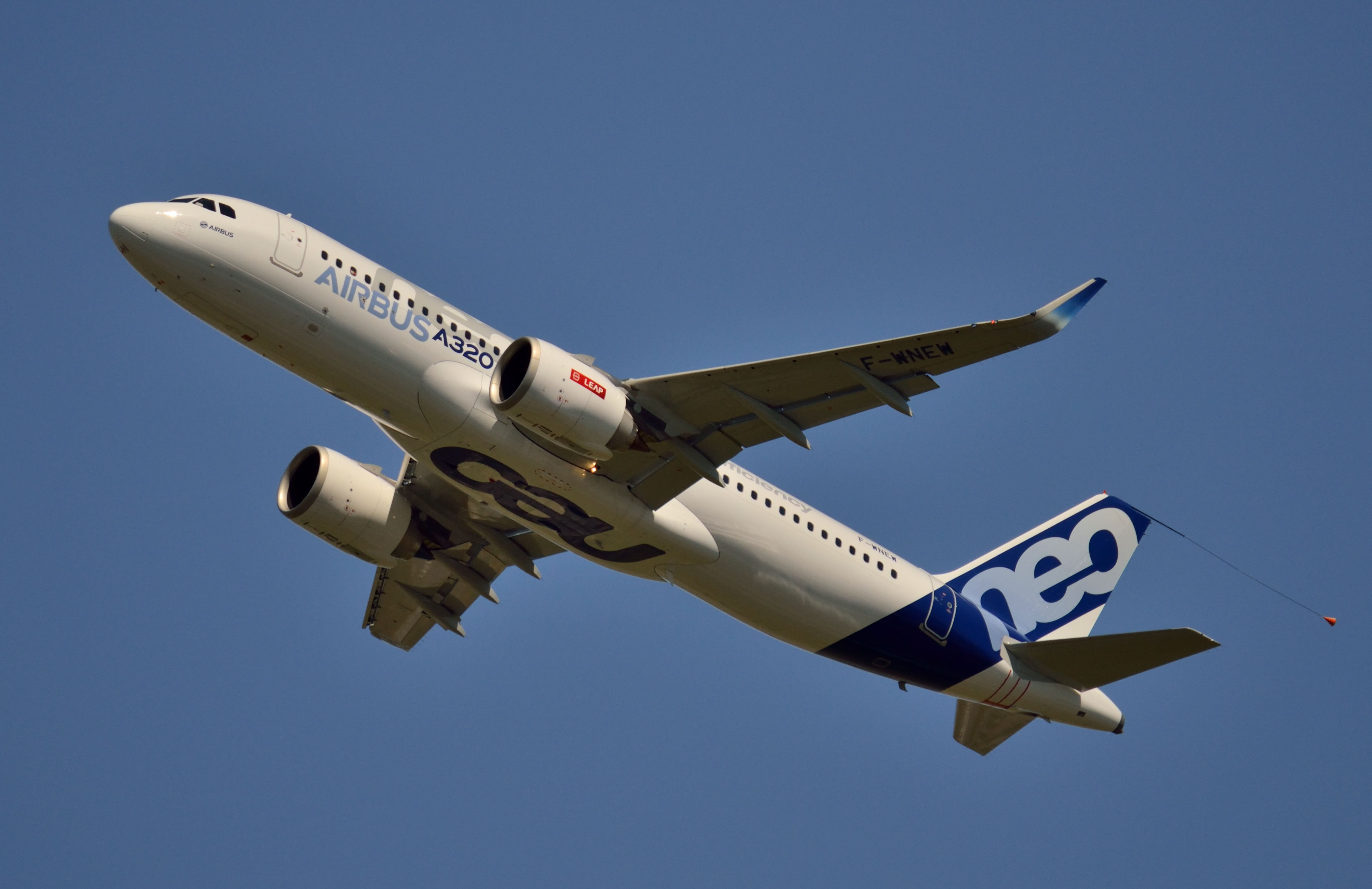A turbofan engine compresses the incoming air through a series of compressor stages. The compressed air is mixed with pressurized fuel and ignited in the combustion chamber. The fuel-air mixture expands and passes through a series of turbine stages before exiting through the engine exhaust. The high-velocity exhaust creates thrust and propels the aircraft forward.
The CFM International LEAP (Leading Edge Aviation Propulsion) engines are high-bypass ratio turbofan engines designed to power the Airbus A320neo family (LEAP-1A), Boeing 737 MAX family (LEAP-1B), and the COMAC 919 (LEAP-1C). The LEAP engine has the same base architecture as the CFM-56 (the world’s best-selling engine).
Efficient materials
The fan and fan case of LEAP engines are manufactured using Carbon Fiber Reinforced Plastic (CFRP) composite. The use of CFRP allows for a lightweight fan module, thereby minimizing the overall weight of the engine. With CFRP, the LEAP engine takes the fan design of the CFM-56 further by thinning and strengthening the fan blades.
CFMI has partnered with Albany Engineered Composites (AEC) to utilize their woven composite technology on the LEAP fan and fan case. Fan blades comprise a 3D woven mesh of specialized carbon fibers manufactured and treated at optimum temperatures. A cured weave form infused with resin allows for precise control over the aerodynamic and directional properties of the blades.
The LEAP engine’s fan blades can achieve varying speeds at different blade locations. CFMI and AEC innovate on the overall design to reduce weight and improve the engine’s performance.
Specific fuel consumption
The efficiency of turbofan engines is measured in terms of the consumed fuel per generated thrust. CFM International claims that LEAP operators must see at least a 15% improvement in fuel consumption compared to the previous CFM engines. Improving the efficiency of the engine means reducing the operating cost by a certain percentage.
The cost is measured as the amount of fuel consumed per hour to produce one pound-force (lbf) of thrust. The LEAP engine consumes 15% less fuel during a typical cruise flight than the present CFM-56 engines.
Reliability
CFM International defines the engine’s reliability as the operational metrics during flights and its reliability throughout its operational life. The departure reliability, delays, cancelations, and in-flight shutdown rates of the LEAP engine are at par with the CFM-56. According to CFMI, the maintenance cost per hour for LEAP is comparable to the CFM-56 family over its lifetime.
The reliability of LEAP is achieved by minimizing the need for frequent repair. The spinner cone directs the incoming debris past the engine’s core into the bypass flow. Tiny sand particles sucked into the core sway away from the center and slide on the outer wall of the duct. The aft bleed doors route those particles to the bypass duct downstream.
Keeping the debris away from the engine on the ground increases the cycles on wing (typically 20,000 cycles on the first run). Furthermore, LEAP has much lower CO2 and NOx emissions compared to CFM-56.
What are your thoughts on the superiority of the CFM LEAP engine over the CFM-56? Tell us in the comments section.



